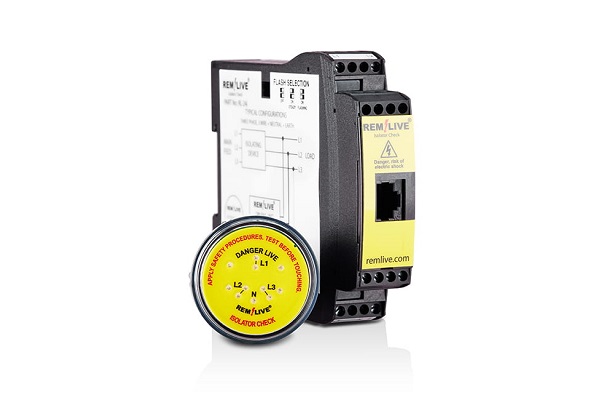REMLIVE continues to keep Australian workplaces safe
REMLIVE electrical safety live line indicators, distributed by NHP in Australia, have been keeping workplaces in Australia safe for more than a decade. The live line or positive isolation indicator (RL24IC) provides a visual reminder that a circuit is live, which reduces the risk of accidents, protects assets, speeds up the fault-finding process and ultimately saves lives.
The primary function of a REMLIVE live line or positive isolation indicator is to provide visual confirmation of correct isolation. It’s connected to the outgoing side of the isolation point and between the load so that the user performing the isolation check can visually view the positive change of state after isolation.
ADVERTISEMENT
This is important, as even after the isolation has occurred, hazardous voltage levels can still be present due to stored energy feedback – the REMLIVE live line indicator provides visual confirmation of this.
It is important to note that other safety isolation and testing procedures still apply before interfacing with the switchboard and control panel.
The REMLIVE live line indicator is supplied with three major components, a DIN rail mount main panel unit, a door display mount unit and a RJ45 cable to connect the main panel unit with the door display.
The main panel unit is simply mounted to DIN-rail – typically inside the switchboard or control panel assembly – and is connected at the load side of the isolating switch. The panel unit connects directly to the door mount display unit via a RJ45 cable, and both the main panel and door display unit are electrically isolated from one another.
The door display unit is designed to fit through the front of a control panel so that the user can see the phase live/isolation status via LEDs. The display unit consists of bright flashing LEDs to attract the user’s attention, displaying the live/isolation status on the front of a control panel. The presence of all three phases (L1, L2, L3) and neutral are represented individually by LEDs on the door display unit, which assists with fault finding and enables users to see at a quick glance that all three phases are live. Low voltage (3.8V DC) to the door also ensures maximum safety for operators.
-
ADVERTISEMENT
-
ADVERTISEMENT


